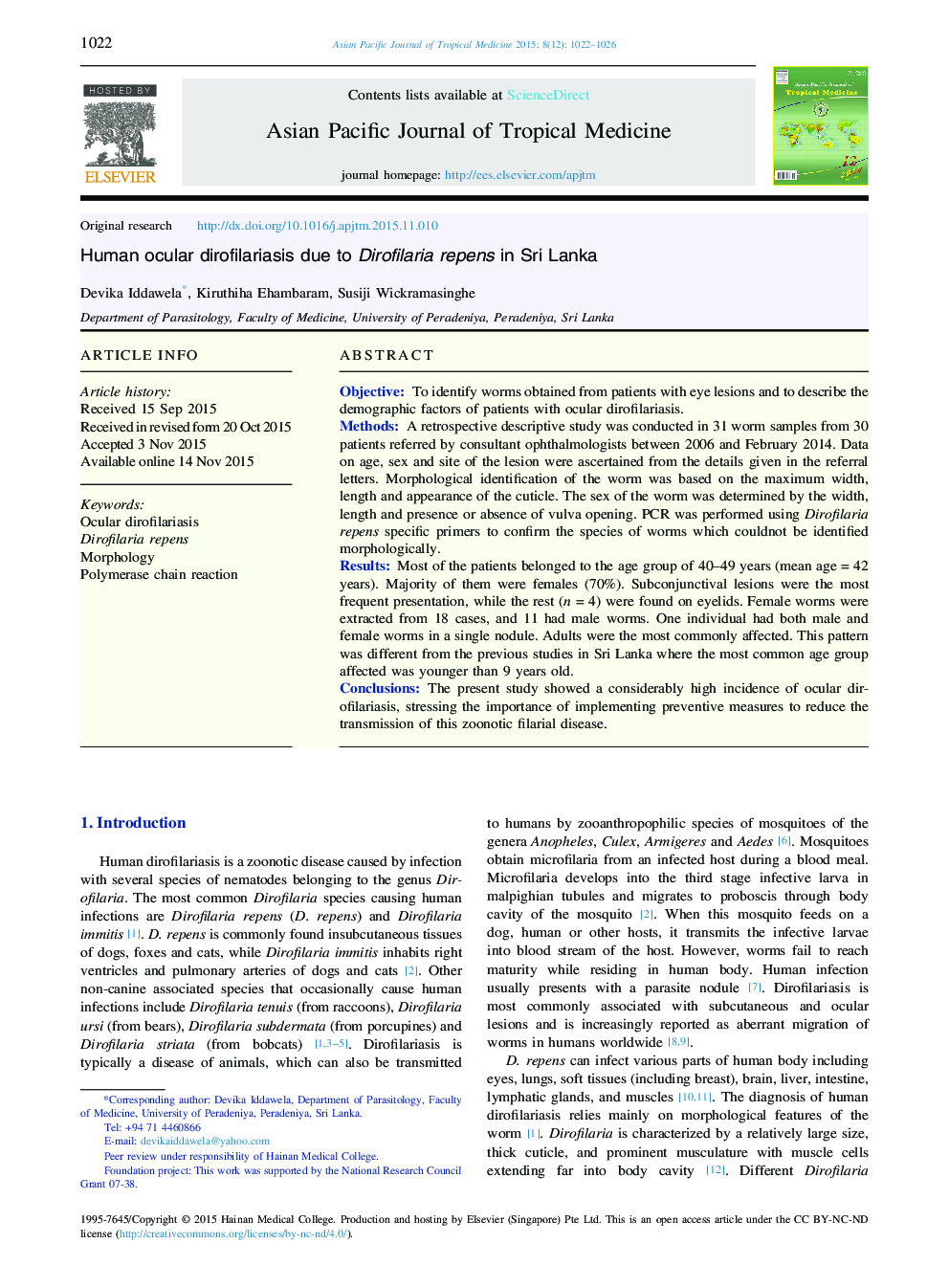| Article ID | Journal | Published Year | Pages | File Type |
|---|---|---|---|---|
| 3455345 | Asian Pacific Journal of Tropical Medicine | 2015 | 5 Pages |
ObjectiveTo identify worms obtained from patients with eye lesions and to describe the demographic factors of patients with ocular dirofilariasis.MethodsA retrospective descriptive study was conducted in 31 worm samples from 30 patients referred by consultant ophthalmologists between 2006 and February 2014. Data on age, sex and site of the lesion were ascertained from the details given in the referral letters. Morphological identification of the worm was based on the maximum width, length and appearance of the cuticle. The sex of the worm was determined by the width, length and presence or absence of vulva opening. PCR was performed using Dirofilaria repens specific primers to confirm the species of worms which couldnot be identified morphologically.ResultsMost of the patients belonged to the age group of 40–49 years (mean age = 42 years). Majority of them were females (70%). Subconjunctival lesions were the most frequent presentation, while the rest (n = 4) were found on eyelids. Female worms were extracted from 18 cases, and 11 had male worms. One individual had both male and female worms in a single nodule. Adults were the most commonly affected. This pattern was different from the previous studies in Sri Lanka where the most common age group affected was younger than 9 years old.ConclusionsThe present study showed a considerably high incidence of ocular dirofilariasis, stressing the importance of implementing preventive measures to reduce the transmission of this zoonotic filarial disease.
